|
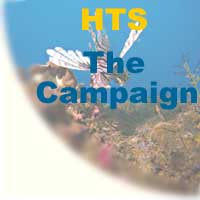
The Campaign - Values
How Important is Exmouth Gulf?
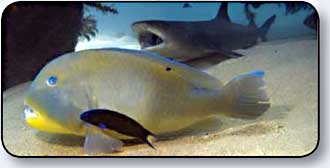 Exmouth
Gulf is one of Australia's most productive marine ecosystems. Because
it is located in the tropical arid zone it functions most of the
time as a 'reverse estuary' where seawater salinity increases slightly
upstream away from the ocean gulf due to evaporation. Exmouth
Gulf is one of Australia's most productive marine ecosystems. Because
it is located in the tropical arid zone it functions most of the
time as a 'reverse estuary' where seawater salinity increases slightly
upstream away from the ocean gulf due to evaporation.
However, during intermittent heavy rainfall events, usually the
result of tropical cyclones, the extensive Yannarie delta system
floods out transporting terrestrial sediment and nutrients into
the marine environment along the entire length of the eastern shore
of the Gulf.
 |
Red floodwater from Cyclone Bobby (300 mm [12
inches] of rain) illustrates that the whole region along the
east side of the Exmouth Gulf is one delta system.
The floodwater fingers out into the blue waters of the Gulf
through dark mangrove island.
This image was taken March 3, 1995. Image Science and Analysis
Laboratory, NASA-Johnson Space Center. 18 Jul. 2005.
" Earth Sciences and Image Analysis Debriefing with Crew
members, 9 April, 2002.”
http://eol.jsc.nasa.gov/debrief/STS109/ausFiles/STS067-709-84.htm
(20 Feb. 2006).
Larger
image available here
|
At least some of the sediment is trapped by the mangrove system.
It is highly probable that the nutrient flush from such events is
captured through the growth of marine plants, including the mangroves,
seaweeds, seagrasses and mats of micro-algae that grow in the shallow,
silty environment on the eastern side of the Gulf.
The relative importance of the regular marine and intermittent
terrestrial inputs of nutrients to the productivity of Exmouth
Gulf is not well understood. The adjacent oceanic environments
are nutrient poor and relatively unproductive and it is difficult
to conceive at inputs from the sea alone could sustain the
productivity of the Gulf ecosystem.
It is likely the mangrove, seaweed and seagrass habitats
of the eastern Gulf function like a battery, fixing and gradually
re-supplying nutrients and energy after re-charge from the
intermittent flood-out events.
The mangrove system on the eastern side of Exmouth Gulf is
a vital nursery for crustaceans and fish, including species
utilised by significant commercial and recreational fisheries
established in the region.
|
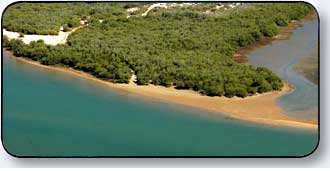 |
 © Photograph courtesy Tony Howard
© Photograph courtesy Tony Howard |
Exmouth Gulf is bio-diverse meaning many different species
in a single area. For example a recent study of the biodiversity
of the prawn trawl grounds identified onsiderably more species
than in the comparable Shark Bay Gulf system.
At the Muiron Islands at the head of the Gulf, museum studies
identified 482 species of fish. Even in the simple muddy bottom
habitats trawled for adult king and tiger prawns there are
289 species of fish and at least 365 species of marine invertebrate.
Many more species would be expected to occupy the protected
mangrove, seagrass, seaweed and reef habitats within the Gulf.
|
The shallow water habitats on the eastern side of the Gulf
are an important feeding ground for both adult and juvenile
green turtles. The area is a major dugong habitat and an important
sheltered resting area for humpback whales which may be critical
for the survival of young calves on the southward migration.
The Yannarie mangrove system on the eastern side of Exmouth
Gulf has been universally recognised as requiring a high level
of protection. It is completely closed to trawling and has
been proposed as a marine conservation reserve under the Conservation
and Land Management Act, as a fish habitat protection area
under the Fish Resources Management Act and as part of a Ningaloo/Cape
Range World Heritage Area.
|
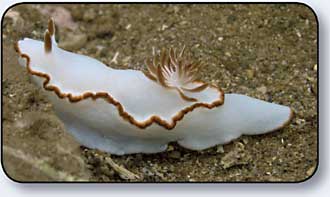 |

|


![]()

![]()

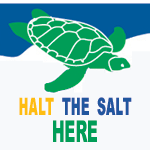


 Exmouth
Gulf is one of Australia's most productive marine ecosystems. Because
it is located in the tropical arid zone it functions most of the
time as a 'reverse estuary' where seawater salinity increases slightly
upstream away from the ocean gulf due to evaporation.
Exmouth
Gulf is one of Australia's most productive marine ecosystems. Because
it is located in the tropical arid zone it functions most of the
time as a 'reverse estuary' where seawater salinity increases slightly
upstream away from the ocean gulf due to evaporation. 

 © Photograph courtesy Tony Howard
© Photograph courtesy Tony Howard 
